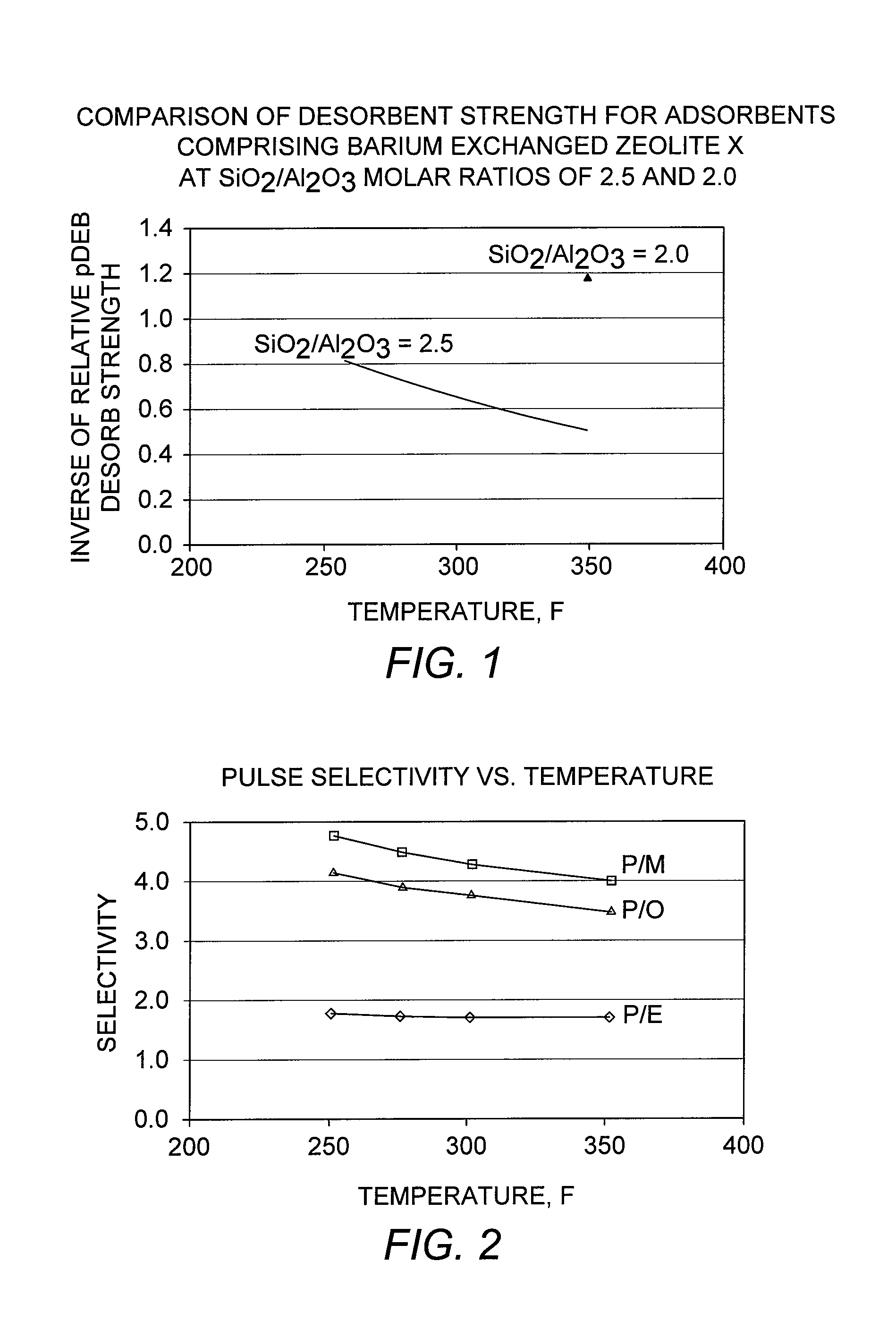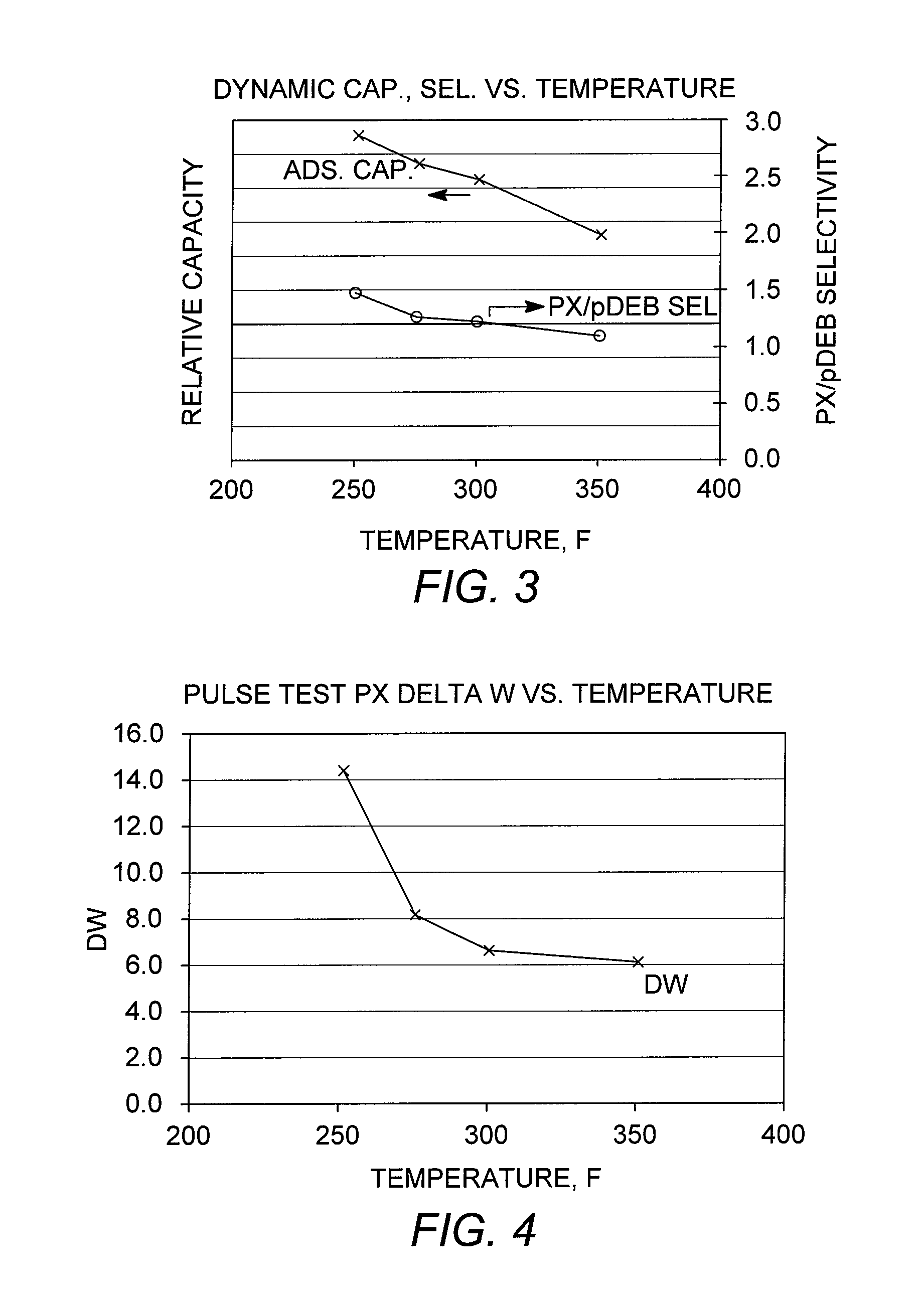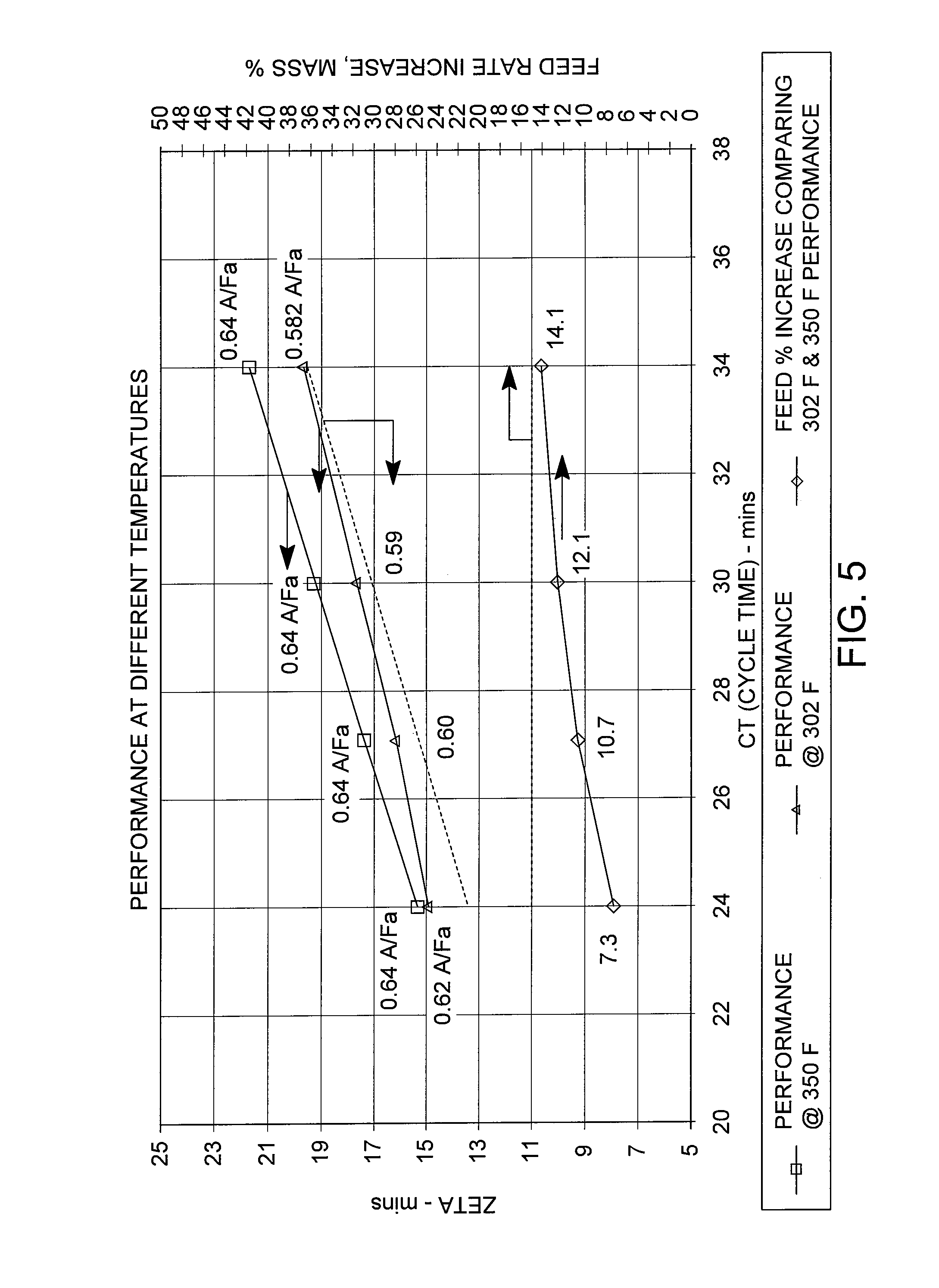Binderless adsorbents and their use in the adsorptive separation of para-xylene
a technology of binderless adsorbents and para-xylene, which is applied in the direction of organic chemistry, physical/chemical process catalysts, chemistry apparatuses and processes, etc., can solve the problems of diminishing the advantages of lower operating temperatures, and achieves increased para-xylene productivity, high adsorbent capacity/mass transfer properties, and short cycle time
- Summary
- Abstract
- Description
- Claims
- Application Information
AI Technical Summary
Benefits of technology
Problems solved by technology
Method used
Image
Examples
example 1
Synthesis of Binderless Adsorbent Particles Comprising Small-Crystallite-Size Zeolite X
[0091]Small-crystallite-size Zeolite X powder, made according to procedures described herein, was combined with a known amount of commercially available kaolin and water to form an extrudable paste, which was then extruded to form composite pellets with 50-90% small-crystallite-size zeolite X in kaolin. The composite was then dried at 100° C. and finally calcined at >600° C. in order to convert the binder kaolin to meta-kaolin. The binder meta-kaolin was then converted to zeolite X by hydrothermal treatment in 2 Na / Al (from meta-kaolin) for up to 10 hours with mild agitation. Although the kaolin clay had a silica to alumina molar ratio of 2.0, it was found that this ratio in the converted zeolite X could be increased by adding a silica source, such as colloidal silica sol, silicic acid, alkali metal silicate, silica gel, or reactive particulate silica, during the caustic digestion of the meta-kaol...
example 2
Selectivity Testing
[0092]A conventional adsorbent comprising zeolite X exchanged with barium and potassium, and having an LOI of 6 wt-%, was evaluated in the adsorptive separation of para-xylene. A standard pulse test as described above was performed by first loading the adsorbent in a 70 cc column under the desorbent para-diethylbenzene. A feed pulse containing equal quantities of ethylbenzene and each of the three xylene isomers, together with a normal nonane (n-C9) tracer, was injected. Pulse tests were performed at various column temperatures in the range from 121° C. to 177° C. (250° F. to 350° F.) to examine the effect of temperature on selectivity. The para-xylene selectivities were determined from the component peaks obtained from each of these pulse tests, and the results are shown in FIG. 2.
[0093]The results show that the para-xylene / meta-xylene selectivity, “P / M,” and the para-xylene / ortho-xylene selectivity, “P / O,” increase at lower adsorption temperatures, while the par...
example 3
Capacity Testing
[0094]A chromatographic separation (dynamic capacity or breakthrough test) was performed using a conventional adsorbent as described in Example 2. A column containing 70 cc of the adsorbent, initially loaded under para-diethylbenzene, was charged with a sample feed mixture containing ortho-xylene, meta-xylene, para-xylene, and ethylbenzene. Breakthrough tests were performed at various column temperatures in the range from 121° C. to 177° C. (250° F. to 350° F.) to examine the effect of temperature on adsorbent capacity and para-xylene / para-diethylbenzene selectivity, “PX / pDEB Sel,” and the results are shown in FIG. 3. The results further confirm that lower adsorptive separation temperatures are favorable, in terms of total adsorbent capacity, without adversely affecting the para-xylene / desorbent selectivity.
PUM
| Property | Measurement | Unit |
|---|---|---|
| adsorption temperature | aaaaa | aaaaa |
| adsorption temperature | aaaaa | aaaaa |
| molar ratio | aaaaa | aaaaa |
Abstract
Description
Claims
Application Information
 Login to View More
Login to View More - R&D
- Intellectual Property
- Life Sciences
- Materials
- Tech Scout
- Unparalleled Data Quality
- Higher Quality Content
- 60% Fewer Hallucinations
Browse by: Latest US Patents, China's latest patents, Technical Efficacy Thesaurus, Application Domain, Technology Topic, Popular Technical Reports.
© 2025 PatSnap. All rights reserved.Legal|Privacy policy|Modern Slavery Act Transparency Statement|Sitemap|About US| Contact US: help@patsnap.com



